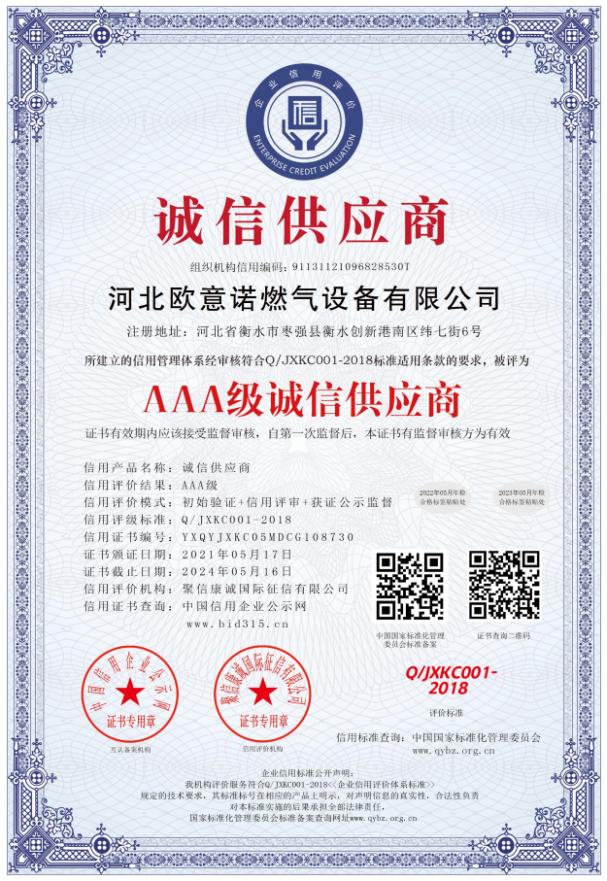
Jul . 29, 2024 21:47
Back to list
Effective Solutions for Managing Pressure with Innovative Reducing Devices for Various Applications
Understanding Pressure Reducing Devices Ensuring Safety and Efficiency
In various industrial and commercial applications, the management of pressure is crucial for both safety and operational efficiency. Pressure reducing devices play a pivotal role in these systems by controlling and lowering the pressure of gases and liquids to desired levels, ensuring that processes operate smoothly without risk of equipment damage or operational hazards.
What is a Pressure Reducing Device?
A pressure reducing device, often referred to as a pressure regulator or pressure reduction valve, is an essential component in many systems where the pressure needs to be maintained at a specific level. These devices work by reducing the input pressure from a high-pressure source to a lower, constant output pressure. They are extensively used in various fields, from natural gas distribution and water supply systems to industrial applications like chemical processing and manufacturing.
How Do Pressure Reducing Devices Work?
The working principle of a pressure reducing device can be understood through its main components the inlet pressure port, the outlet pressure port, and the regulating mechanism
. When a high-pressure fluid enters the device, a sensing element within the regulator detects the pressure and adjusts the mechanism to maintain the desired output pressure. This is typically achieved through a spring-loaded diaphragm or piston that responds to changes in pressure.When the output pressure exceeds the set point, the device automatically throttles the flow, thereby reducing the pressure. Conversely, if the output pressure drops below the set point, the valve opens wider to allow more flow, maintaining a steady pressure in the system. This automatic regulation is crucial for preventing overpressure situations that could lead to equipment failures or safety hazards.
Applications of Pressure Reducing Devices
pressure reducing device

Pressure reducing devices have a wide array of applications across different sectors. In the natural gas industry, for instance, these devices are essential for controlling the pressure of gas as it is distributed to residential and commercial customers. By ensuring that the gas pressure remains within safe limits, they help prevent leaks, explosions, and other dangerous situations.
In water supply systems, pressure reducing valves help maintain a consistent water pressure, safeguarding plumbing systems from potential damage caused by high-pressure surges. In industrial settings, these devices are vital for processes involving gases and liquids that require precise pressure controls to ensure optimal performance and safety.
Benefits of Using Pressure Reducing Devices
One of the primary benefits of utilizing pressure reducing devices is enhanced safety. By preventing overpressure situations, these devices protect both personnel and equipment. Additionally, they contribute to energy efficiency. Properly regulated pressure can lead to reduced energy consumption since equipment does not have to work harder to overcome excessive pressure.
Moreover, pressure reducing devices extend the lifespan of equipment. Consistent pressure levels minimize wear and tear on machinery, reducing maintenance costs and downtime. This reliability is particularly important in industrial applications where production continuity is critical.
Conclusion
Pressure reducing devices are indispensable in various sectors, ensuring safe and efficient operations. Their ability to maintain regulated pressure levels not only enhances safety and reliability but also contributes to energy savings and equipment longevity. As industries continue to evolve and prioritize safety and efficiency, the role of pressure reducing devices will remain vital in maintaining optimal operational conditions. Investing in high-quality pressure reducing devices and understanding their functionalities can lead to significant improvements in both safety performance and operational efficiency.
Latest news
-
Safety Valve Spring-Loaded Design Overpressure ProtectionNewsJul.25,2025
-
Precision Voltage Regulator AC5 Accuracy Grade PerformanceNewsJul.25,2025
-
Natural Gas Pressure Regulating Skid Industrial Pipeline ApplicationsNewsJul.25,2025
-
Natural Gas Filter Stainless Steel Mesh Element DesignNewsJul.25,2025
-
Gas Pressure Regulator Valve Direct-Acting Spring-Loaded DesignNewsJul.25,2025
-
Decompression Equipment Multi-Stage Heat Exchange System DesignNewsJul.25,2025

